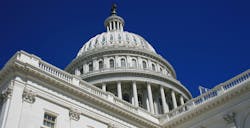Presidential order combating antibiotic resistance will fuel laboratory and diagnostic innovation
Antibiotic-resistant infections are associated with two million illnesses, 23,000 deaths, and more than $20 billion in direct excess healthcare costs in the United States each year, according to the United States Centers for Disease Control and Prevention (CDC)—and the problem is getting worse. For this reason, the Obama Administration recently announced an Executive Order directing federal agencies to work together to develop broad, comprehensive solutions to combat the rising challenge of antibiotic-resistant bacteria. In addition to the Executive Order and based on recommendations from the President’s Council of Advisors on Science and Technology (PCAST) and its Antibiotic Resistance Working Group, the White House released a National Strategy for Combating Antibiotic-Resistant Bacteria.
The National Strategy outlines five interrelated goals for action that federal agencies will be tasked to complete in collaboration with partners in healthcare, public health, veterinary medicine, agriculture, food safety, and academic, federal, and industrial research. The goals include:
- Slow the emergence of resistant bacteria and prevent the spread of resistant infections.
- Strengthen national one-health surveillance efforts to combat resistance.
- Advance development and use of rapid and innovative diagnostic tests for identification and characterization of resistant bacteria.
- Accelerate basic and applied research and development for new antibiotics, other therapeutics, and vaccines.
- Improve international collaboration and capacities for antibiotic resistance prevention, surveillance, control, and antibiotic research and development.
While the infectious disease and microbiology communities have warned about the dangers of failing to address the rising antibiotic-resistance crisis for years, the new federal initiatives may provide a powerful impetus to promote and fund the types of broad initiatives required to effectively combat antibiotic resistance. Two proposals in particular, highlighted both in the Executive Order and in the National Strategy, could have significant implications for hospitals and fuel both laboratory and diagnostic innovation.
The first proposal tasks the Departments of Defense (DoD), Veterans Affairs (VA), and Health and Human Services (HHS) with developing policies to drive hospitals and other healthcare facilities to implement robust antibiotic stewardship programs. These would be based on best practices such as those defined by the CDC’s Core Elements of Hospital Antibiotic Stewardship Programs. One measure under serious consideration is to include antibiotic stewardship in the Conditions of Participation for Medicare. This could force essentially all hospitals in the United States to implement antibiotic stewardship as a key component of their quality initiatives.
A critical component to the success of antibiotic stewardship initiatives is access to robust and timely microbiology data, which requires close coordination with laboratories. In addition, many studies have now demonstrated the value of rapid diagnostic testing (RDT) in helping clinicians reduce the time to appropriate and effective antibiotic therapy that in turn leads to better patient care, improved outcomes, and lower hospital costs associated with resistant infections. Hence, proliferation of truly robust stewardship programs in every hospital could drive significant demand for rapid microbiology data and incentivize implementation of not just currently available RDT methods, but also development and implementation of a new generation of microbiology tests with superior speed, accuracy, and information. This could include both low-cost, high-throughput sequencing and high-speed antibiotic susceptibility testing, in which results for a broad range of pathogens and how they respond to antibiotics would be available in hours instead of days and enable clinicians to optimize therapy for most patients much earlier in the course of the infection.
The second proposal highlighted in both the Executive Order and the National Strategy would directly incentivize development of the next generation of antibiotics and rapid diagnostics. This would be accomplished by developing better infrastructure for conducting clinical trials, streamlining regulatory approval processes, and, most important, developing incentives for greater private investment in antibiotic and diagnostic development. For the latter incentive, the PCAST working group suggested that the HHS, via its Biomedical Advanced Research and Development Authority (BARDA), should spend up to $800 million per year to support partnerships with industry. This would include a $20 million prize for development of new point-of-care technologies to quickly detect and identify the 18 antibiotic-resistant organisms that are considered the most urgent threats to public health.
While such financial incentives would certainly drive interest in new diagnostic development, an even more powerful behavior driver for industry is robust laboratory funding and test reimbursement. While not directly addressed by the Executive Order or the National Strategy, these drivers could truly spur the kinds of innovations that President Obama and his council of advisors are looking for.
Funding and reimbursement for laboratory testing has been a challenge for years as labs are continuously asked to do more with less. This has certainly affected microbiology labs and the companies that serve them, for instead of developing the next generation of high-speed, clinical-decision support tests, the focus has been on automating existing tests to reduce labor costs. Unfortunately, this has led to a dearth of truly innovative microbiology tests, which may be in part to blame for the antibiotic-resistance crisis.
The president’s initiative on antibiotic resistance, however, provides an opening to consider new proposals and perhaps mechanisms for laboratory funding and reimbursement. The HHS, which includes the Centers for Medicare & Medicaid Services along with other federal agencies, was tasked with assessing all strategies for combating antibiotic-resistant bacteria, and submitted its five-year national action plans to the president on February 15, 2015. It has also been tasked to collaborate with healthcare, local government, and industry partners in developing their plans. This affords laboratory and industry advocacy groups such as the American Society for Microbiology, the Clinical Laboratory Coalition, and AdvaMedDx the opportunity to address microbiology laboratory funding and enable their constituents to become more effective partners in the fight against antibiotic-resistant bacteria.

